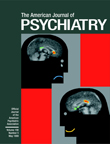As noted by the editors in the preface to this volume, the field of developmental psychopathology has grown tremendously in the last two decades. This volume is the result of a symposium convened at Cornell University to explore the state of the field and prospects for the future.
The first two chapters explore the relatively understudied area of integration of neurobiology into developmental psychopathology. Goldsmith and Gottesman review aspects of genetics with special emphasis on the study of antisocial behavior. They note that although there is very clear evidence for the role of genetic influences on antisocial behavior, the interaction of such risk with other factors must be considered. Depute, Collins, and Lucian provide a summary of the interaction of neurobiological systems and environmental influences. This interesting and provocative chapter suggests the need for a fundamental shift in methods and instruments.
The next section of the book is devoted to discussion of developmental models of complex psychopathology. Patterson provides a rich discussion of implications of developmental theory for understanding early-onset delinquency. An interesting feature of his discussion is the focus on both stability and change of such behaviors and the importance of focusing on contextual variables. Cornblatt, Dworkin, Wolf, and Erlenmeyer-Kimling discuss the role of markers and developmental processes in schizophrenia. Their chapter focuses on impairments in attention as a marker for the schizophrenia genotype and in the development of symptoms, particularly those related to deficits in social skills. Brooks-Gunn and Attie review developmental psychopathology in the context of adolescence. They focus on eating and depressive disorders in the context of physiological, psychological, and social factors. They emphasize the importance of understanding the meaning, experience, and continuity of symptoms over time. Sigman summarizes recent behavioral research in autism, which has increased dramatically in the past few decades. A major focus of research has been the attempt to understand the nature of social dysfunction in autism.
In the final chapter, Rutter provides a masterful overview of concepts and prospects for developmental psychopathology. He notes that many of the issues identified, such as multifactorial etiologies, are not specific to developmental psychopathology and that, as with the rest of medicine, it is important to move beyond the mere identification of risk factors to an understanding of mechanisms. He also suggests that the time has come to move away from the emphasis on broad “universal” aspects of development to more specific theories and hypotheses.
The chapters in this book are a testament to the diversity and productivity of current research in developmental psychopathology. This truly outstanding book will be of interest to researchers, students, and clinicians alike.

